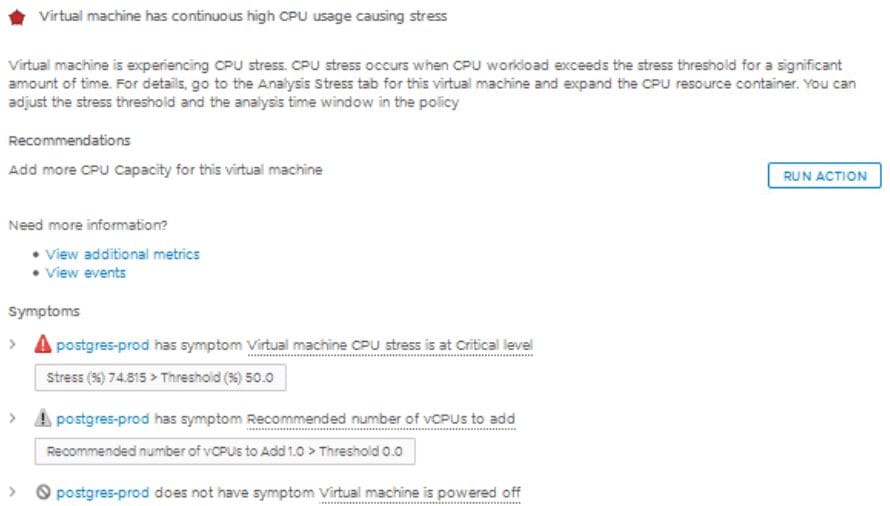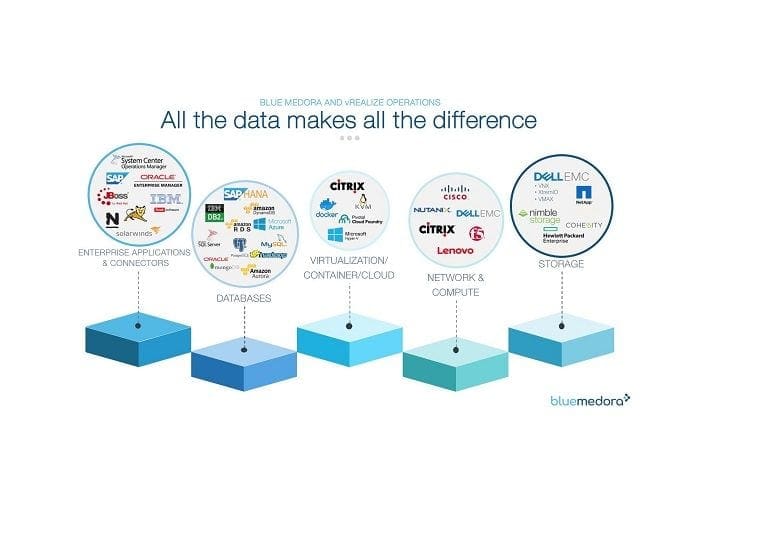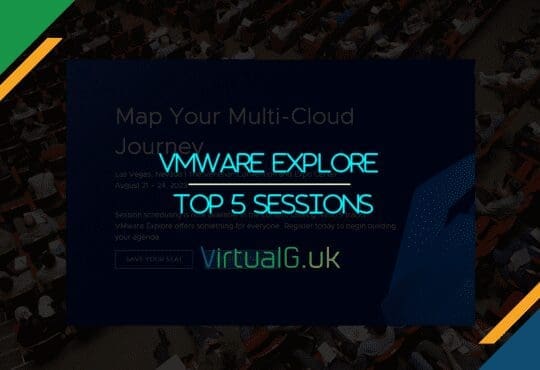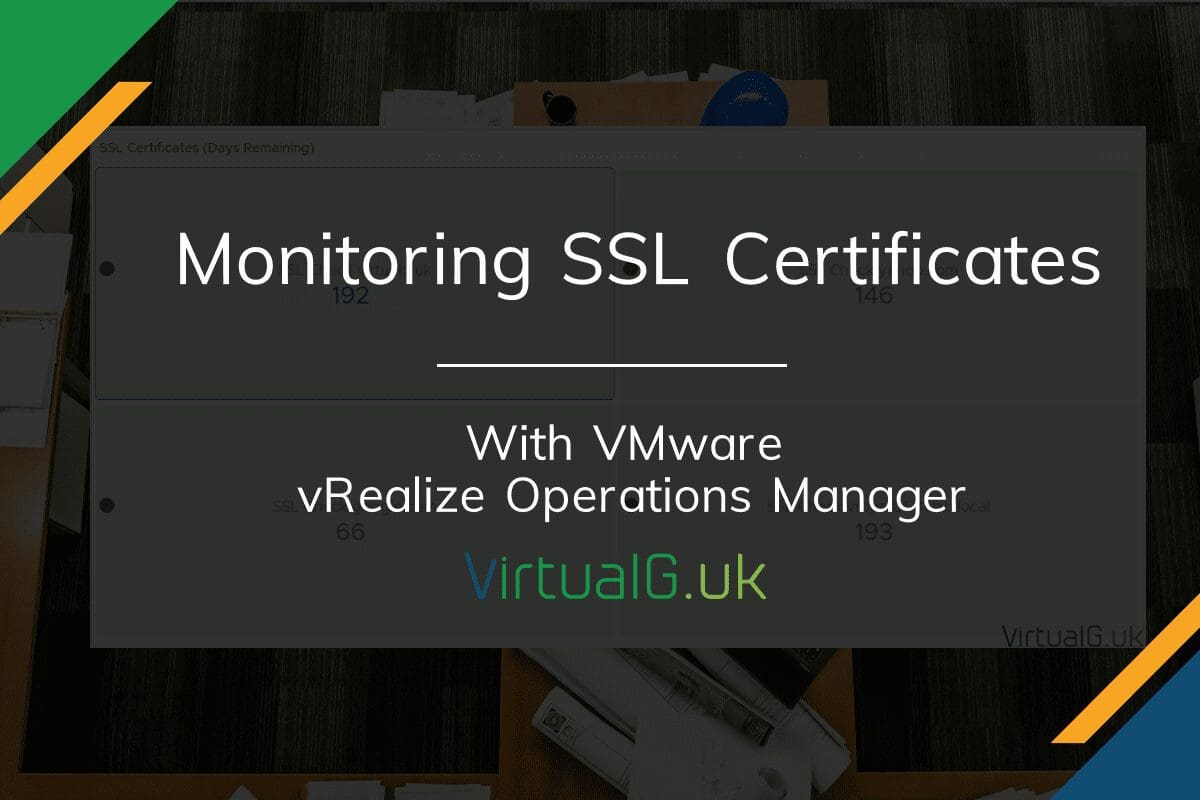VMware’s vRealize suite, combined with management packs from Blue Medora is a set of cloud management tools that focus on automating, planning & monitoring both on-prem cloud platforms and public cloud PaaS.
Learn how to manage your cloud with vRealize Operations and Blue Medora in this blog post.
When it comes to monitoring, alerting and managing multiple cloud deployments, we look for:
- A single pane of glass
- Something that can scale
- A secure solution
- Ability to manage the hardware right through to the application and cloud services layer
- Flexibility – Being able to manage not just VMware solutions but also hardware, hypervisors and applications from other vendors
- Ability to manage standalone physical systems – Because not everything is virtual! 😉
One product that fits these criteria is vRealize Operations (vROps). This software forms part of the vRealize suite.
Multi-cloud management features
When we talk about cloud management, vROps has the following feature set to help us with day to day operations:
- Cloud planning
- Forecast growth based on real metrics
- Deep dive into your Compute, Network and Storage trends
- Automatically calculate when these resources will run out with real data charts to prove this to management teams
- Capacity Optimization
- Run reports to determine if any resources can be reclaimed to reduce the cost of running the cloud and prevent any unnecessary future expenditure
- Right size your virtual machines, databases and applications to eradicate excessive licensing consumption
- Self healing cloud
- Choose to remediate issues right from the vROps user interface
- Proactive monitoring and alerting
- Utilise out of the box monitoring across clouds
- Proactively alert Infrastructure, Development and Management teams of issues within the cloud before the problem impacts the end user
- Ensure compliance
- Utilise PCI-DSS & HIPAA compliance checks to alert of non compliance ahead of auditing
- Enable VMware hardening rules to ensure security within the cloud
- Scale
- Connect your VMware, AWS, Azure cloud platforms into a single pane of glass for active cloud management
- Deploy remote collectors to branch offices or remote locations to efficiently bring all regions into one solution for ease of management
- Scale as you go, with support for up to 45 million metrics and 180 thousand objects
How does vROps extend into non-VMware solutions?
The first thing to note is that by default, vROps is very functional. Alerts do not need to be configured, default dashboards and reports already exist. To extend this beyond basic VMware based Cloud management, you just need to install management packs.
vROps allows 3rd party vendors to write their own management packs for their own products. This enables many of the great benefits of vROps, one being a single pane of glass.
For example, management packs from Blue Medora allow you to “link in” your physical infrastructure, applications, databases and cloud platforms directly into vROps. All of this is fully supported.
Let’s take an example
You have a VMware based Infrastructure running several Oracle Database Servers. All of this is located on VMware vSphere, Cisco UCS and a Dell EMC XtremIO storage array.
When we look at the location of an Oracle DB instance, we can see where this DB sits in the cloud:

We can go into more detail , ie look into what hardware this Oracle DB instance is ultimately running from, the Storage Array and the LUN.
What about my app, it’s slow, what’s going on?
I stress that even though this is a VMware product, the ability to import 3rd party management packs is very effective for management too. Blue Medora, AWS and Azure all have management packs. Microsoft also have various management packs for a range of application and database management. See the end of this post for details.
Take a scenario when a particular application is slow, or you suspect that an database query is taking a long time to execute. Within vROps, simple load up a query analysis dashboard and sort query by execution time. This will show you the longest running queries.
This action is only necessary though, if vROps has not already proactively detected the issue and created an alert for you!

Deeper troubleshooting
This is only the start, there are several troubleshooting dashboards, reports and alerts that will help you diagnose an issue. Alerts are tagged with resolutions too, so if you do not understand an alert it will guide you towards how it should be fixed via recommendations:

Need to see a specific metric?
No problem. Search for the object or find it in the environment and select All Metrics. Select the metric of interest. There are usually dozens or hundreds of metric depending on the object type.

Adding management packs to your base vROps instance, adds more metrics. This in turn enables more alerts, reports and dashboarding capability.
What about fixing issues directly from vROps?
We can achieve this from the alert that is triggered, take for example a VM with high CPU usage:

Simply hit “run action” and we can sort out the issue from the UI without logging into any other system:

Rightsizing your cloud
There are a few ways this can be achieved. Efficiency alarms can be triggered if a VM is not sized correctly. vROps will look at historical data and determine actual disk, CPU, memory usage vs configuration and let you know when something can be modified to save on resources.
You can also run built in reports, or have these automatically emailed to you on a schedule of your choosing.
It’s also possible to look at consumption of cloud services such as Amazon RDS and determine if those systems should be located on-prem or in the cloud from a cost perspective.
I hope this gives an insight into how vRealize Operations can help with cloud management.
For further details, please see the following links:
Blue Medora
https://bluemedora.com/products/vmware-vrealize-true-visibility
Personally I find Blue Medora the best source for management packs. They have the most comprehensive range and full documentation and demos available. They get access to pre-releases of vROps to ensure than when a new version of vROps becomes available that their management packs are already supported. This is often an oversight when choosing a vendor.

Solutions Exchange
https://marketplace.vmware.com/vsx/?contentType=1
If Blue Medora do not have the pack you need, you can check the VMware Solutions Exchange for other packs. Some are free, some are paid. You will need to read the documentation to determine this. Your version of vROps (Standard, Advanced or Enterprise) will also determine which packs can be installed.
The image below explains what type of management pack can be installed for each vROps edition.

Hands on Labs
Be sure to run the free VMware Hands on Labs to learn more about what vROps and Blue Medora can offer.

60 second vROps video series
Check out my 60 second video series on YouTube for a range of short Install, Configure and Manage videos for vROps








